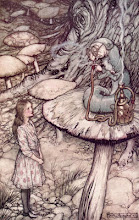- Metapatterns can serve as an approach to creative learning (culture, biology, mental).
- People need to discover the diverse forms that metapatterns reveal themselves in, particularly social structures.
- Evolution is a pattern-finding process (spatially and temporally).
- The algorithm of evolution: replication, variation, selection.
- Replication: mitotic division of single cells.
- Variation: occurs in the process of replication (out of pure possibility and entropy).
- Selection: a test to see which patterns survive well enough to carry on.
- Cultural evolution embodies the same elements of the algorithm, but are not as certain as far as causes go.
- Many aspects of culture are the subjects of this algorithm: cars, food, education, careers, ideas, words, etc get replicated.
- These are all subject to variation too (cover albums, art inspiration etc, )
- Selection is also a huge part in cultural evolution: university acceptations letters, job firing, consumers favoring one brand of cereal over another, etc.
- Metapatterns show up in both biological and cultural evolutions, ex: “columns of support” can be seen as legs, tree trunks, Eiffel tower struts. (iconography as well: corn stalk acting as a connection from underworld to our world as column, functioning as a symbol of nutrition and psychological influence of support).
- Metapatterns are particularly successful when the two categories (bio/cult) converge.
- Borders: part of a system that can isolate a system from an environment, or regulate the exchange of matter, energy, info etc.
- Biologically: borders are the membrane of a cell, culturally: national boarders play a role of filtering matter (growing and shrinking in ‘pore’ size).
- Borders then relate back to selection in evolution: to allow some elements of the outside world into your inner realm is to make one’s self vulnerable to the dangers, threatening one’s survival.
Wednesday, April 8, 2009
"Metapatterns" Volk reading notes
Subscribe to:
Post Comments (Atom)

No comments:
Post a Comment